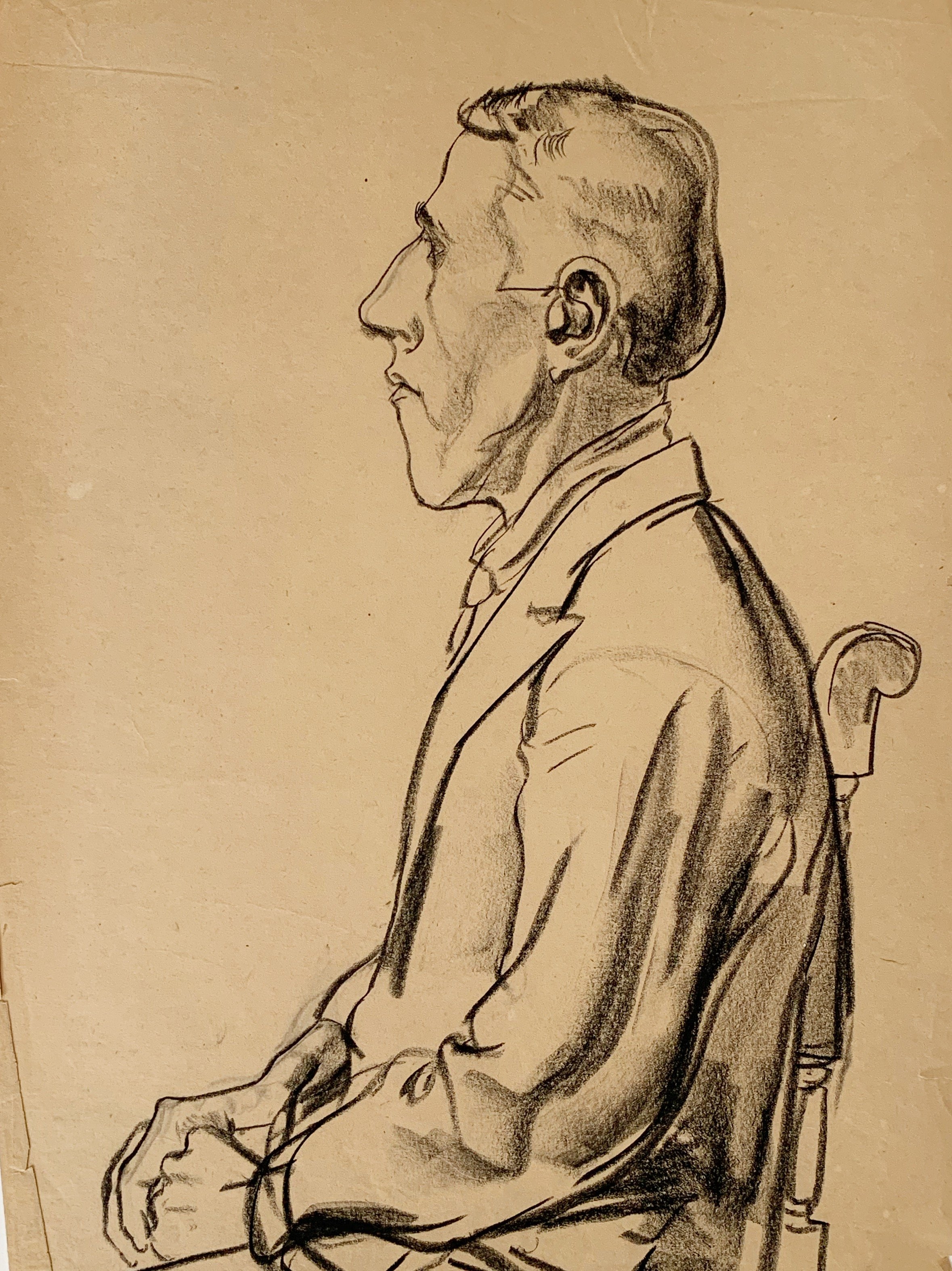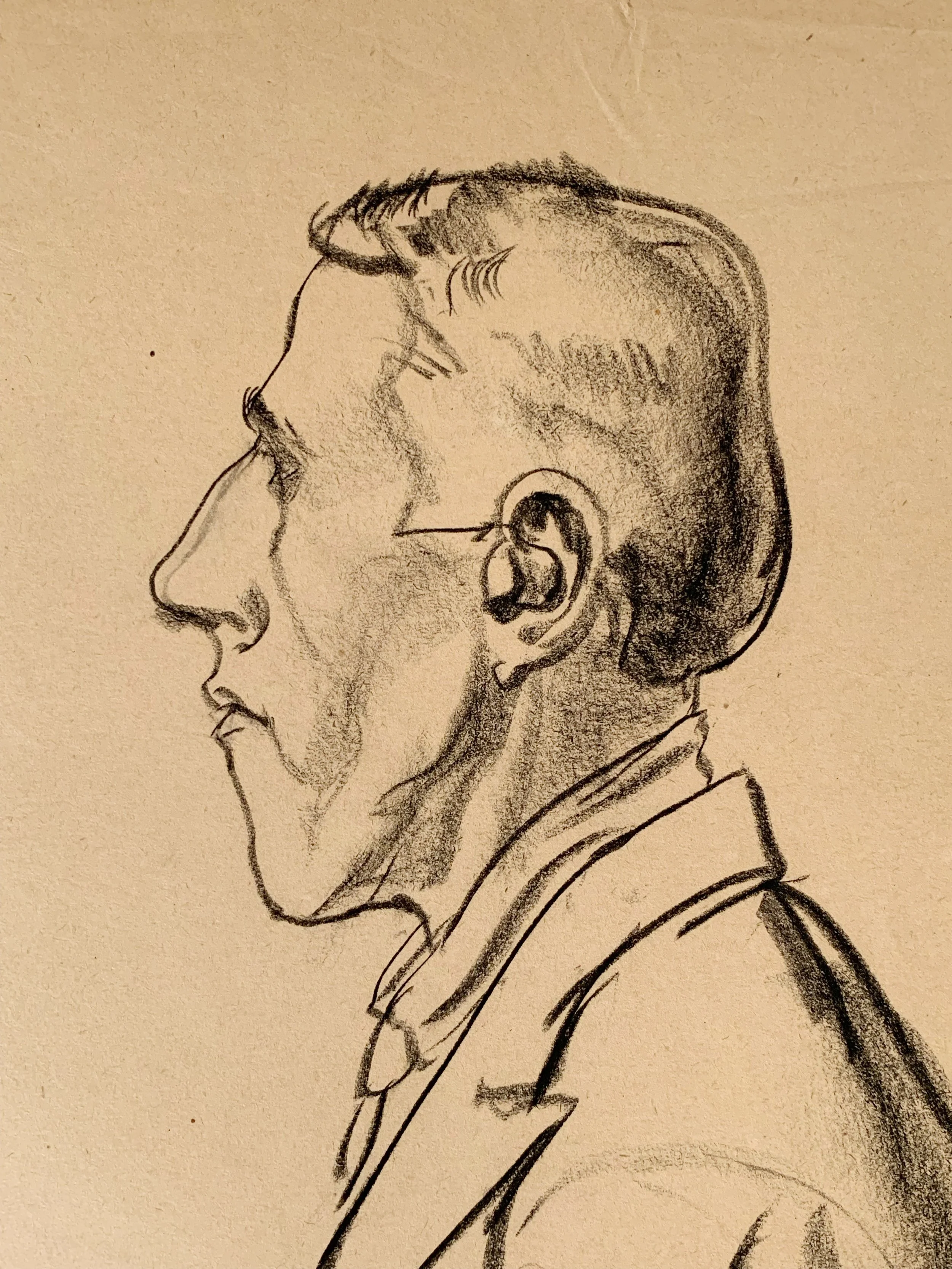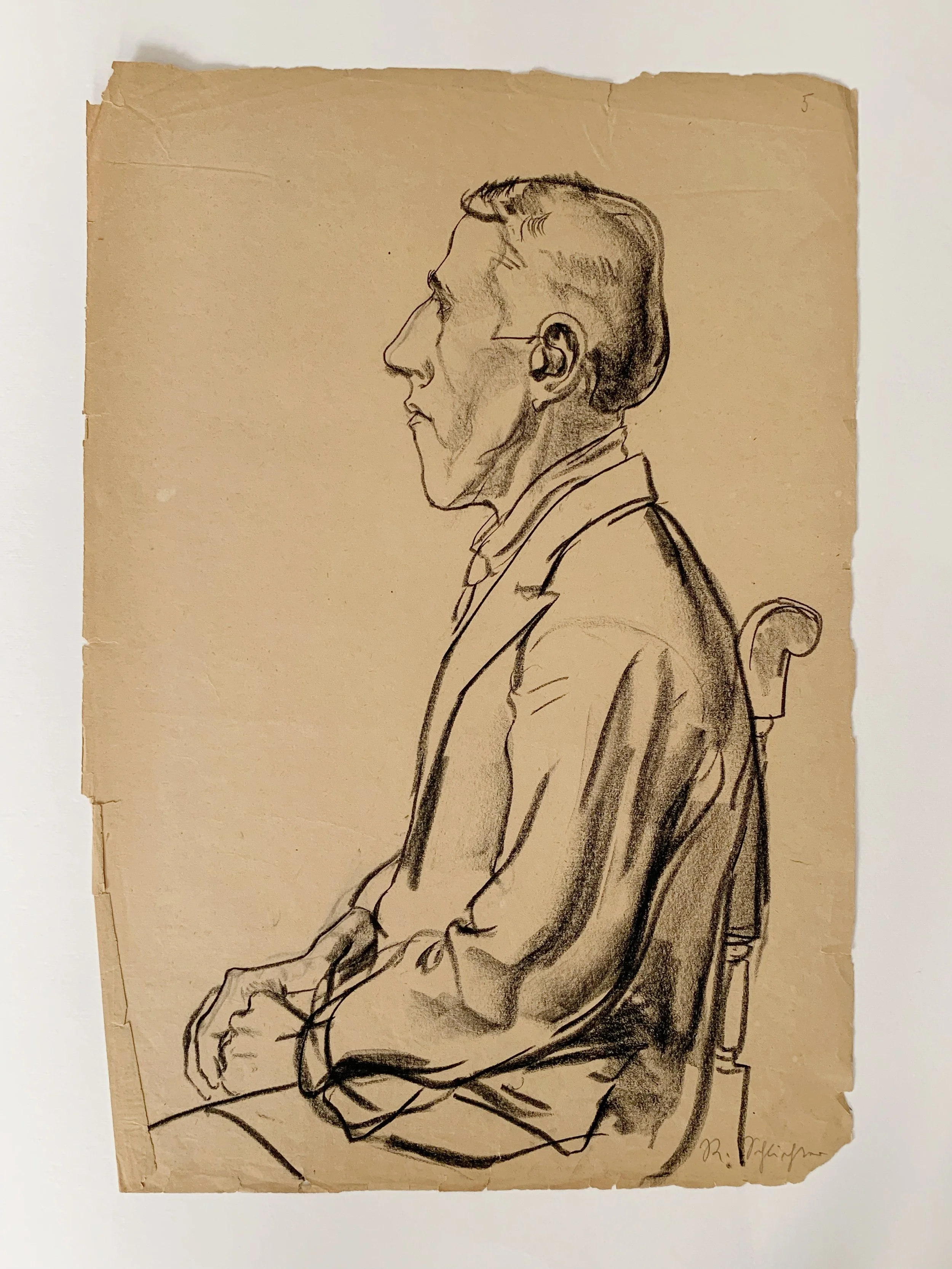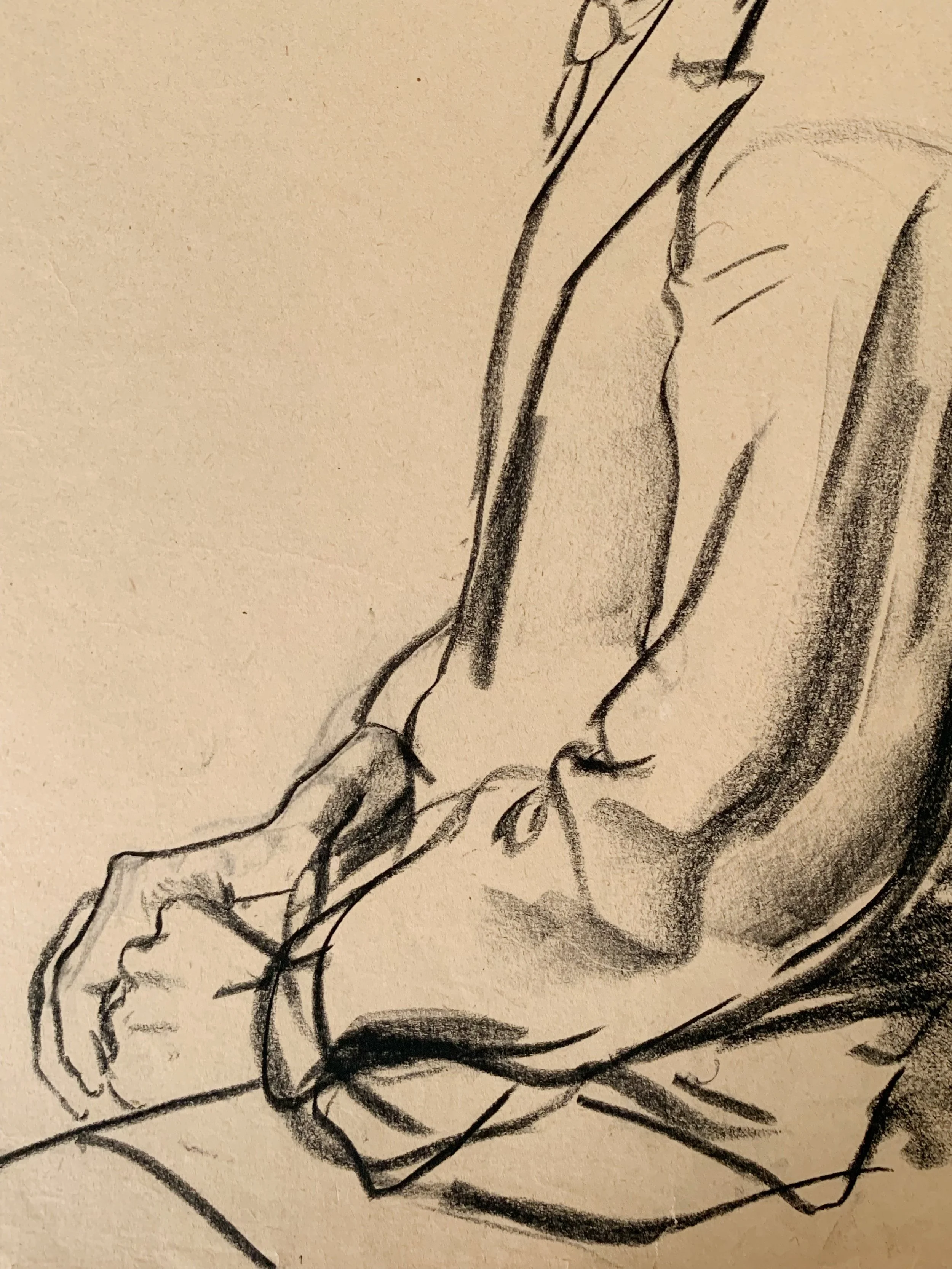Rudolf SCHLICHTER (1890-1955)




Rudolf SCHLICHTER (1890-1955)
Homme assis de profil gauche, portrait supposé de Bertolt BRECHT (1898-1956)
Pierre noire sur papier beige
Signé “R. Schlichter” en bas à droite
45,5 x 35 cm
Petits manques sur les bords, pliure en bas à gauche
-
Seated man in left profile, supposedly a portrait of Bertolt BRECHT (1898-1956)
Black stone on beige paper
Signed "R. Schlichter" on the lower right
45,5 x 35 cm
Small damages on the edges, fold in the lower left corner
Artiste allemand figure de la Nouvelle Objectivité, Rudolf Schlichter naît à Calw en 1890. Il suit une première formation artistique à l’École des Arts et Métiers de Stuttgart puis à l’Académie des beaux-arts de Karlsruhe où il se lie d’amitié avec Georg Scholz et Karl Hubbuch. En rébellion contre les principes de l’Académie, il s’installe à Berlin en 1919 où il rejoint les expressionnistes du Novembergruppe et les dadaïstes berlinois, artistes politiquement engagés contre la République de Weimar.
Dans les années 1920, il s’oriente vers un réalisme de plus en plus marqué et participe à l’exposition historique Neue sachlichkeit (Nouvelle objectivité) organisée en 1925 à la Kunsthalle de Mannheim par Gustav Friedrich Hartlaub. Ce dernier réunit un groupe hétérogène d’une trentaine d’artistes parmi lesquels Otto Dix et Max Beckmann. Cet événement inaugure une nouvelle sensibilité qui rompt progressivement avec l’expressionnisme hallucinatoire d’avant-guerre auquel succède un art du constat froidement objectif où le rôle de la couleur s’avère davantage soumis à celui du dessin qui se veut plus analytique.
Rudolf Schlichter devient l’un des principaux acteurs du Vérisme, courant le plus radical de la Nouvelle Objectivité auquel prennent également part George Grosz et Otto Dix. Ceux-ci s’affirment par la négation de l’art “classique” en s’attachant à montrer de façon crue et cynique le chaos que génère leur époque au lendemain de la Première Guerre mondiale.
Rudolf Schlichter parodie les travers de la société bourgeoise. Il mène une vie de débauche et peint sans filtre la réalité du spectacle qui s’offre à lui et ce parfois jusqu’à la caricature dans le but de heurter ses contemporains.
La physionomie du modèle représenté ici est très proche de celle de l’écrivain et dramaturge allemand Bertolt Brecht (1898-1956), membre du Novembergruppe dont Rudolf Schlichter a réalisé entre autres un portrait peint en 1926 et conservé à la Galerie nationale d’art moderne de Munich.
Collections publiques
Paris, Centre Pompidou, Musée national d’art moderne
Berlin, Berlinische Gallery
Berlin, National Gallery, Musée Staatliche
Francfort, Musée Städel
Stuttgart, Staatsgalerie
Madrid, Musée Thyssen-Bornemisza
New York, MoMA
Rudolf Schlichter was born in Calw in 1890. He received his first artistic training at the School of Arts and Crafts in Stuttgart and then at the Academy of Fine Arts in Karlsruhe, where he became friends with Georg Scholz and Karl Hubbuch. In rebellion against the principles of the Academy, he moved to Berlin in 1919 where he joined the expressionists of the Novembergruppe and the Berlin Dadaists, artists politically committed against the Weimar Republic. In the 1920s, he moved towards an increasingly marked realism and took part in the historic exhibition Neue sachlichkeit (New Objectivity) organized in 1925 at the Kunsthalle in Mannheim by Gustav Friedrich Hartlaub. Hartlaub brought together a heterogeneous group of about thirty artists, including Otto Dix and Max Beckmann. This event inaugurated a new sensibility that gradually broke with the hallucinatory expressionism of the pre-war period, which was succeeded by an art of coldly objective observation where the role of color was more subject to that of drawing, which was more analytical. Rudolf Schlichter became one of the main actors of Verism, a more radical current of the New Objectivity in which Georges Grosz and Otto Dix took part. They asserted themselves by negating "classical" art by showing in a raw way the chaos generated by their time after the First World War. Rudolf Schlichter parodies the failings of bourgeois society. He leads a life of debauchery and paints without filter the reality of the spectacle that is offered to him and this sometimes to the point of caricature in order to offend his contemporaries. The face of the model represented here is very close to that of the German writer and playwright Bertolt Brecht (1898-1956), a member of the Novembergruppe, whose portrait Rudolf Schlichter painted in 1926 and which is kept in the National Gallery of Modern Art in Munich.
